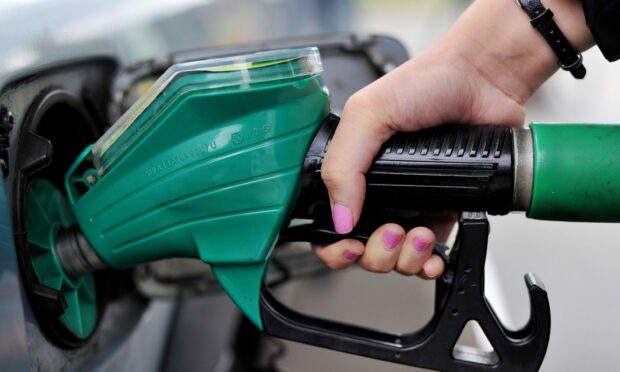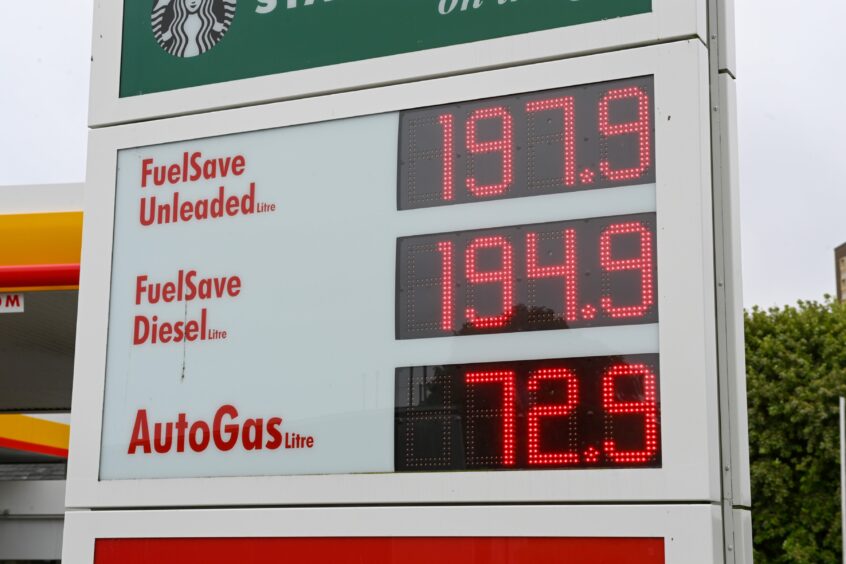People across the north and north-east may have noticed the prices at the pumps creeping slowly upwards again.
For the most part, prices for both petrol and diesel have been slowly dropping since average prices peaked in July.
In the last week however, they have started going up again.
Petrol cost 158.9p per litre at both Asda and Esso in New Elgin just last week, but have since increased to 159.9p per litre. Similar increases have also been reported in the Highlands in Inverness.
In the UK as a whole, RAC says the average wholesale price of petrol per litre rose from 120.89p on September 14 to 123.71p on October 3.
Wholesale prices rising means prices at the pumps will likely continue to follow suit.
As of Sunday, the RAC said drivers are paying an average of 164.49p per litre for unleaded and nearly 185.84p per litre for diesel.
Why are prices going up again?
The rise in fuel prices is likely down to the fall in value of the pound.
In the last year, it is estimated that this trend added an extra 7p per litre to drivers’ fuel bills.
Sterling dropped to a 37-year low last month, and the weeks since have brought mini-budgets, proposed tax cuts, U-turns on proposed tax cuts and governmental sackings.
Diesel prices are also breaking records, with the gap between them and petrol prices reaching 20p.
These further rises come as the country is in the grips of a cost of living crisis.
However, prices currently remain considerably lower than the peaks of about 190p per litre of unleaded and 200p for diesel reported across the north and north-east earlier this year.
Will fuel prices continue to rise?
Back in March, fuel duty was cut by 5p per litre in an attempt to help motorists cope with rising prices.
Given that this is 2p less than the now average cost being added to drivers’ bills, the support has become somewhat irrelevant.
Steve Gooding, director of motoring research charity the RAC Foundation, said there are “storm clouds on the horizon” when it comes to prices at the pumps.
He said: “While fuel prices have mostly fallen back in recent weeks, rising crude oil prices, an increased refining margin, cutbacks in oil production by Opec (Organisation of the Petroleum Exporting Countries) and yet more turbulence on the currency markets suggest storm clouds on the financial horizon, most acutely for diesel drivers already facing a 20p per litre price premium over petrol.
“Given all the other pressures the Treasury has to contend with there seems little prospect of another duty cut anytime soon.
“If one does come it would need to be significant in size to make any meaningful impact on pump prices.”
Another spokesman from the RAC, Simon Williams, agreed that Opec’s reduction in oil production by two million barrels a day means prices are likely to keep rising.
Looking forward, he said: “Sadly for diesel drivers, the situation seems certain to get even worse with prices heading back to over 190p a litre which would mean the cost of a tank would have gone up by more than £5 to £104.5 since the start of October.
“Similarly, petrol seems to be on its way up to 166p based on current retailer margins taking a fill-up back to over £91.”


Conversation